How the Candy Bomber Started a Movement with Two Sticks of Gum
March 24, 2021
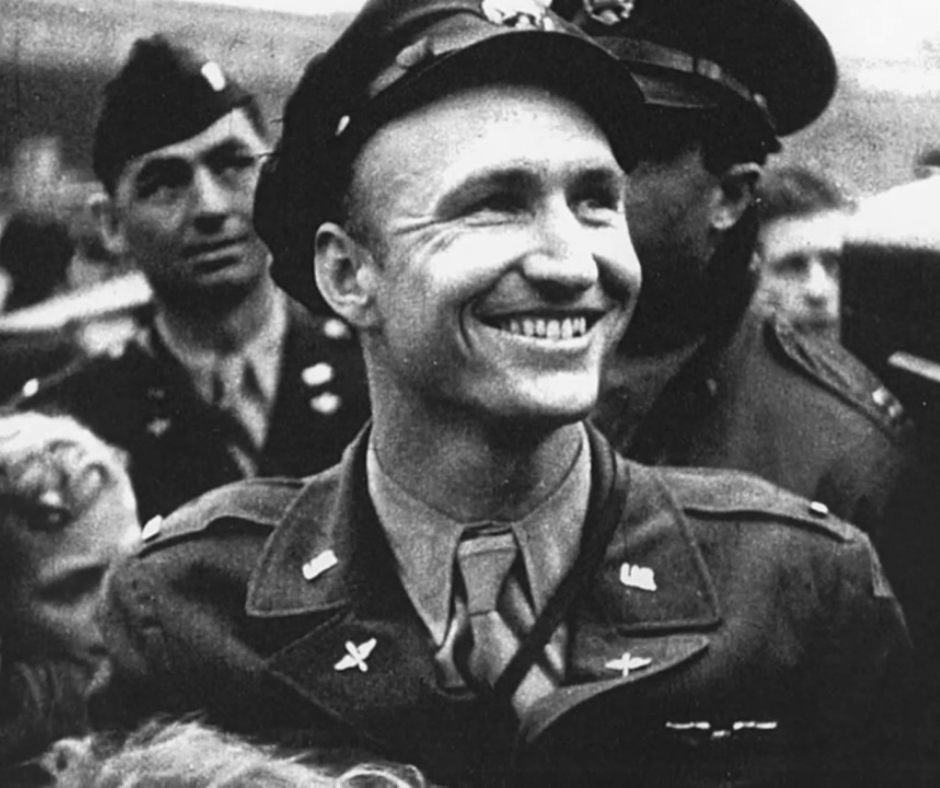
Written by: Amy Emerson
---
When I was in middle school, I struggled to keep up with the subject of history. In my easily distracted mind, history class seemed like a big fuzzy blur of random dates, names, and events that, for the most part, I couldn’t grasp. No history knowledge really stuck. I didn’t think I could relate to it. I didn’t even think it was relevant to today.
The story of 100-year-old Colonel Gail Halvorsen, the original “Berlin Candy Bomber,” was the story that shifted my mindset about history and its ultimate role in our lives.
The Berlin Airlift: A Response to Conflict
Colonel Gail “Hal” Halvorsen grew up in rural Utah but always had a desire to fly. He earned his private pilot's license when he was just 21 years old and joined the US Army Air Force. Eight years later, Halvorsen was assigned to be a pilot for the Berlin Airlift.
Immediately after World War II ended, Berlin, the capital of Germany, was under the control of the Soviet Union. The Soviets wanted Berlin all to themselves, and closed all highways, railroads and canals, making it impossible for the people who lived there to get food or any other supplies. The Soviets believed their blockade would eventually drive Britain, France, and the U.S. out of Berlin for good. But instead of retreating, the U.S. looked to the sky.
.png)
U.S. and ally cargo planes sneakily flew over the Soviet occupation zone to deliver food, fuel, and medicine to the people who lived in western Berlin each day. This project, code-named “Operation Vittles” by the American military, became known as the Berlin Airlift.
Col. Halvorsen’s role was to fly the C-54 cargo planes used to ferry supplies into the starving city. Halvorsen was interested in photography, and during his days off he’d often go sightseeing in Berlin and shot film on his personal handheld movie camera.
One day in July, Halvorsen was filming plane takeoffs and landings at Tempelhof, the main landing site for the airlift. While there, he saw about thirty children lined up behind one of the barbed-wire fences. He went to meet them and noticed that the children had nothing. It was common for children in occupied areas to ask through the fence,“Any gum, chum?” or “Any bon-bon?” But these children didn’t ask for anything.
In a 2017 interview for the Utah Aviation Hall of Fame, Halvorsen described his experience. He said:
- "I met about thirty children, right up against the barbed wire fence that protected Tempelhof's huge area. They were excited and kept asking, ‘Well, whatcha got in the airplane?’ ‘20,000 pounds of flour. Dried potatoes, dried eggs.’ The children were grateful and told me that 'when the weather gets so bad that you can't land, don't worry about us. We can get by on a little food, but if we lose our freedom, we may never get it back.'”
Touched, Halvorsen reached into his pocket and took out two sticks of Wrigley’s gum to give to the children. The kids broke it into little pieces and shared it; and the ones who didn’t get any sniffed the wrappers, smiling at the sweet scent. Watching the children, so many of whom had absolutely nothing, Halvorsen regretted not having more to give them. 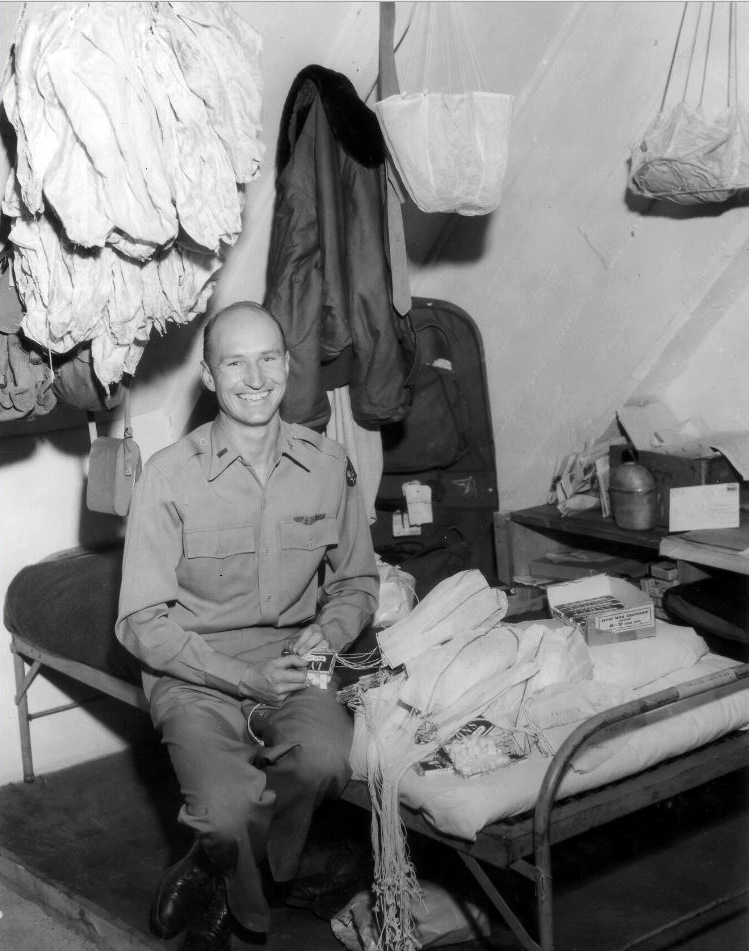
A Desire to Help
Halvorsen recorded that he wanted to do more for the children, and so told them that the following day he would have enough gum for all of them, and he would drop it out of his plane. According to Halvorsen, one child asked, "How will we know which plane is yours?" to which Halvorsen responded that he would “wiggle his wings” as he approached their position. The wiggle of the plane explains “Candy Bomber” Halvorsen’s other nickname: “Uncle Wiggly Wings.”
That night, Halvorsen, his copilot, and his engineer pooled their candy rations for the next day's drop. The accumulated candy was heavy, so in order to ensure the children were not hurt by the falling candy, Halvorsen made three parachutes out of handkerchiefs and tied them to the rations. In the morning when Halvorsen and his crew made regular supply drops, they also dropped three boxes of candy attached to handkerchiefs. They made these drops once a week for three weeks. Each week, the group of children waiting at the Tempelhof airport fence grew significantly.
Halvorsen lived up to his promise, getting other pilots to donate their candy rations and having his flight engineer rock the airplane during the drop. More and more children showed up to catch his airdrops and letters began arriving, “requesting special airdrops at other points in the city,” wrote the Air Force.
The Start of a Movement
After newspapers got wind of what was happening, Halvorsen’s superiors realized what he was doing and the public relations opportunity it offered. Chocolate and candy donations began to pour in from the United States. Though Halvorsen himself was recalled by the military for a promotional tour, he had begun an international effort to get candy to the children of West Berlin.
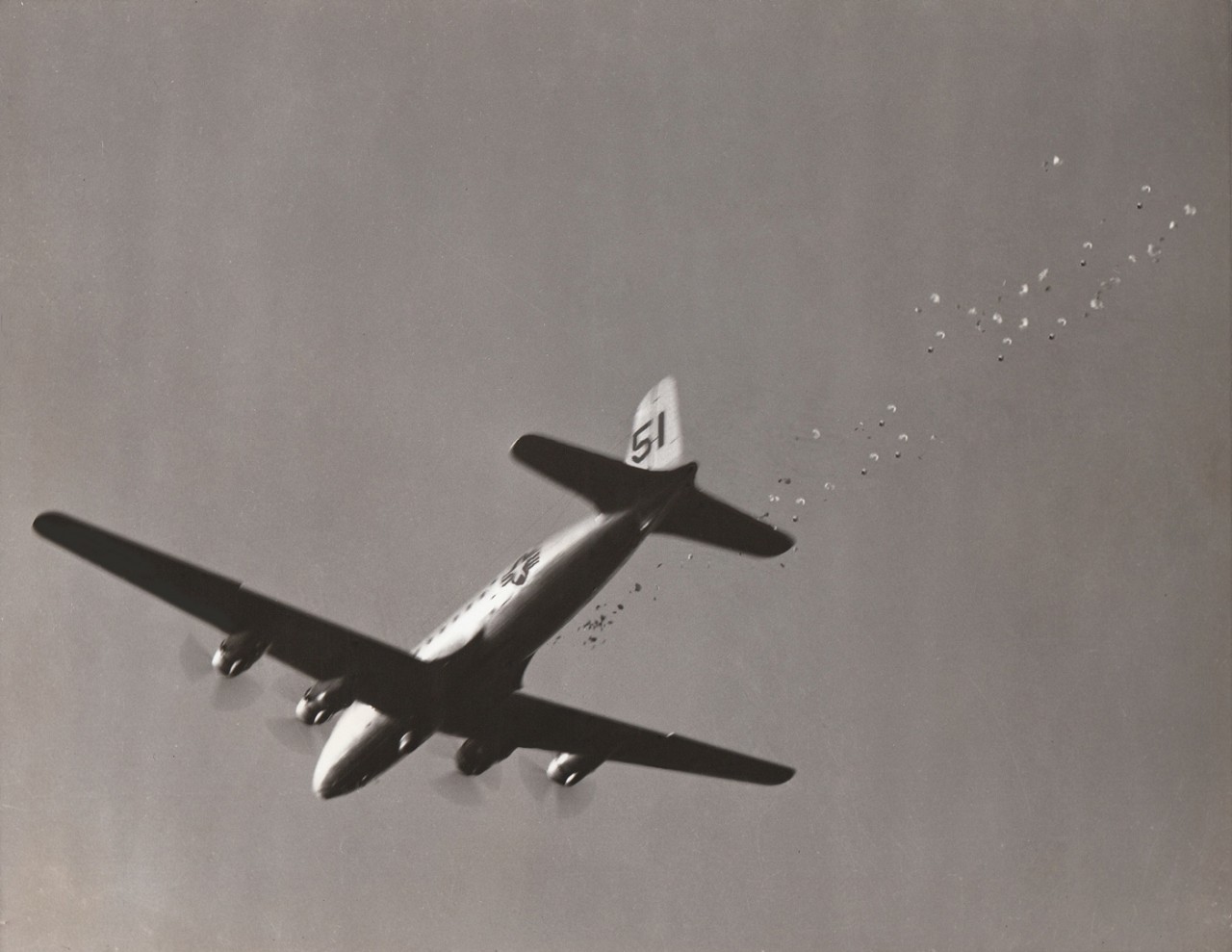
By November 1948, Halvorsen could no longer keep up with the amount of candy and handkerchiefs being sent from across America. Because of this, a college student named Mary C. Connors of Chicopee, Massachusetts offered to take charge of the project and worked with the National Confectioners Association to prepare the candy and tie the handkerchiefs. Due to the swell of support, Little Vittles pilots began dropping candy as often as every other day. Children all over Berlin had sweets, and more and more artwork was getting sent back with kind letters attached to them.
For both children and adults, life in West Berlin during the blockade was not easy. Fuel and electricity were rationed, and the black market was the only place to obtain many goods. Still, most West Berliners supported the airlift and their western allies. The airlift was supposed to be short-term, but the Soviets kept refusing to lift the blockade. For more than a year, hundreds of American, British, and French cargo planes delivered food, fuel, and other goods to airfields in West Berlin.
By spring 1949, it was clear that the blockade of West Berlin hadn’t gone according to the Soviet’s original plan. In May, the blockade was lifted and the Soviets reopened the roads, canals, and railway routes into the western half of the city. Allies continued the airlift until September, just in case the blockade was reinstated. Thankfully, it was not.

(Photo: Colonel Gail Halvorsen, the original Berlin Candy Bomber, is greeted outside of the Museum of World Treasures by Museum President and CEO, Mike Noller, August 2018.)
Present Day
In 2014, one of the children who waited for Halvorsen had the opportunity to meet him. Christel Jonge Vos was just 11 years old when she stood at the airfield fence. Although she never caught candy, she remembered the daily ritual as a symbol of hope and fun at a time when tensions were high on the ground.
As for Halvorsen, he told Capi Lynn for the Statesman Journal in 2014 that many beneficiaries of his time as the Candy Bomber had tracked him down to thank him and tell their own stories. "The small things you do turn into great things," Halvorsen said.
Halvorsen has received numerous awards for his role in Operation Little Vittles, including the Congressional Gold Medal. However, Little Vittles was not the end of Halvorsen's military and humanitarian career. Over the next 25 years, Halvorsen advocated for and performed candy drops in Bosnia-Herzegovina, Albania, Japan, Guam, and Iraq. He retired in August 1974 after logging over 8,000 flying hours.

(Photo: Col. Halvorsen stands before a part of the Berlin Wall on display at the Museum of World Treasures.)
---
I had the privilege of being present at the Berlin Airlift Veterans Association (BAVA) 75th Anniversary Reunion, which was held at the Museum of World Treasures in August of 2018. At 99 years old, Colonel Gail Halvorsen was a veteran in attendance. I had the honor of hearing his story firsthand, knowing that he was the man present for the actual airlift back in 1948 and 1949. He was the man who met the children initially with nothing to give but two sticks of gum, and who continued to help restore morale for those young children in Bosnia, Albania, Guam, Iraq, and Berlin.
My middle school mind had it all wrong. History isn’t just about capturing stories in books, memorizing, and regurgitating verbatim. History shows us how the stories of those before us can continue to teach and impact both present and future generations. Listening to the story of the Berlin Airlift described by people who'd lived it firsthand made me feel personally connected to this part of history, and I hope this blog post helped have the same effect on you.
If you remember nothing else from Col. Gail Halvorsen's story, just remember: "The small things you do turn into great things."
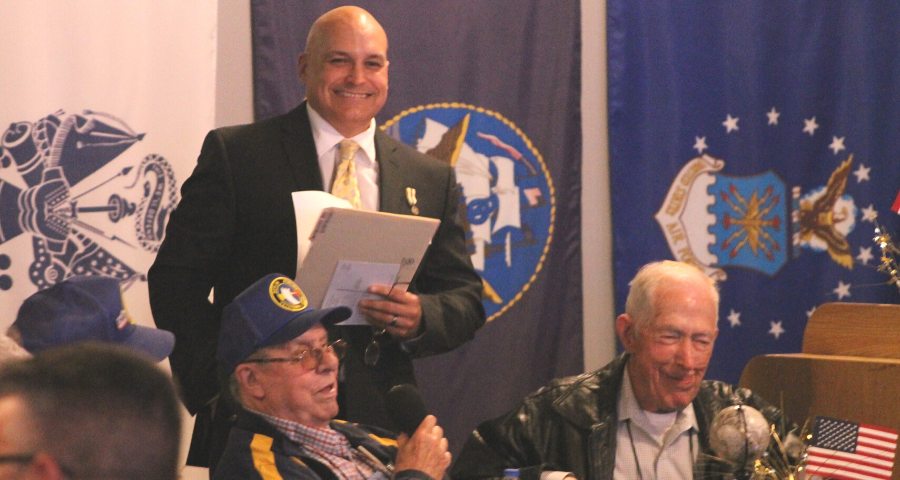
(Photo: Museum volunteer Scott McIntosh facilitates discussion with veterans of the Berlin Airlift Veterans Association for their 75th Anniversary Reunion at the Museum of World Treasures.)

(Photo: Lorna Kardatzke, one of the founders of the Museum of World Treasures, greets Col. Halvorsen.)
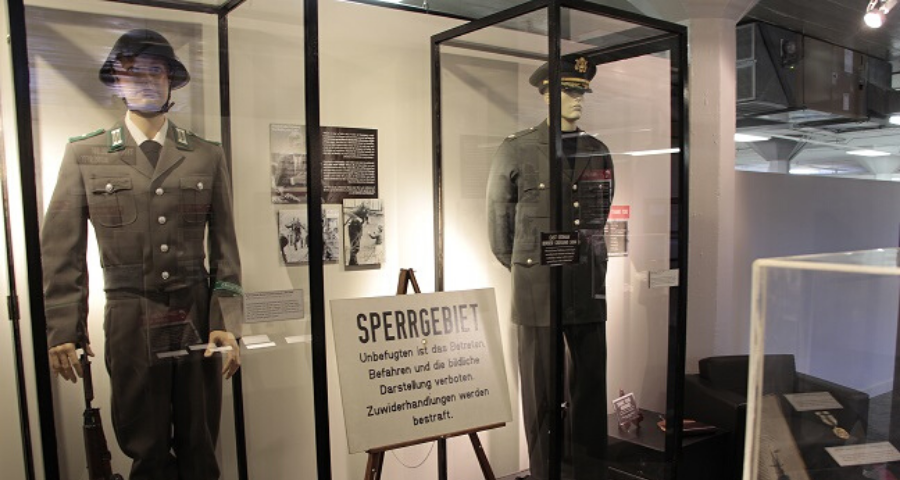
(The "All Are Not Free" exhibit on display at the Museum of World Treasures tells the story of those who lived in Berlin from the end of World War II until the destruction of the Berlin Wall in 1989.)
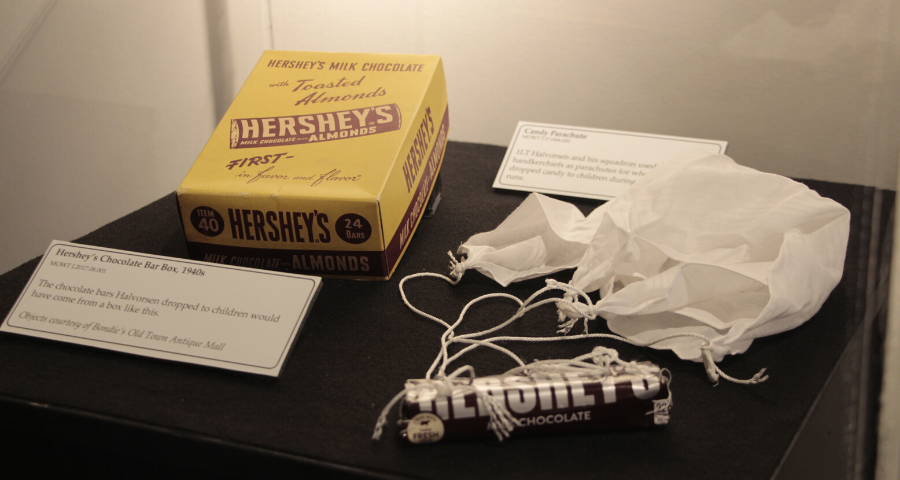
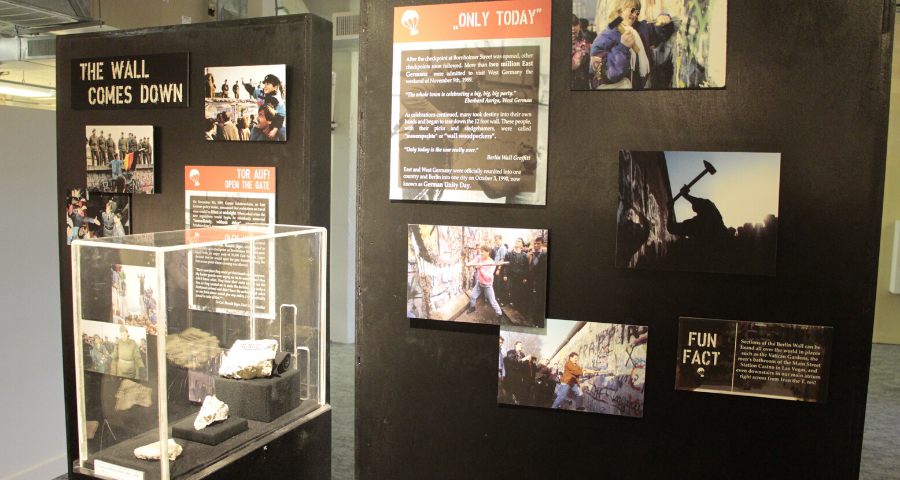
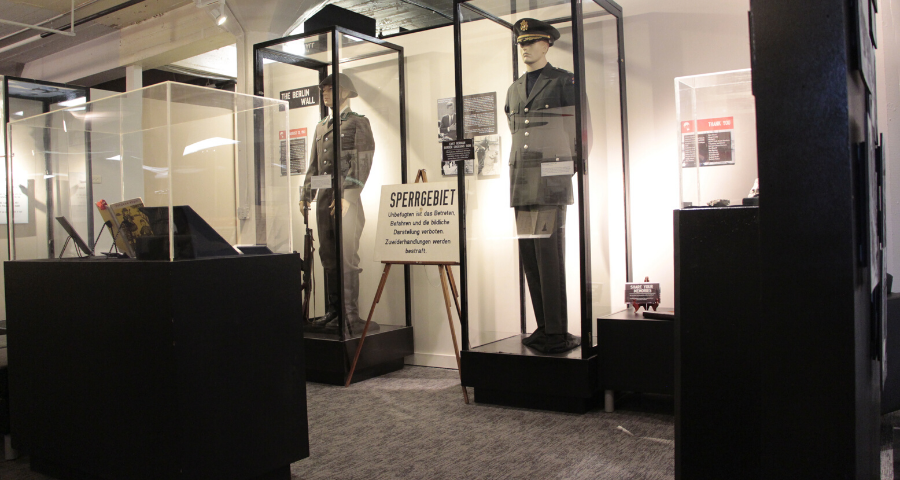
---
Thank you for taking the time to read our blog post!
Our mission is to provide a gateway to the past which educates, entertains, and inspires lifelong learning. Click to plan your visit, explore our All Are Not Free exhibit, oreven view a standing piece of the Berlin Wall in person today at the Museum of World Treasures.
